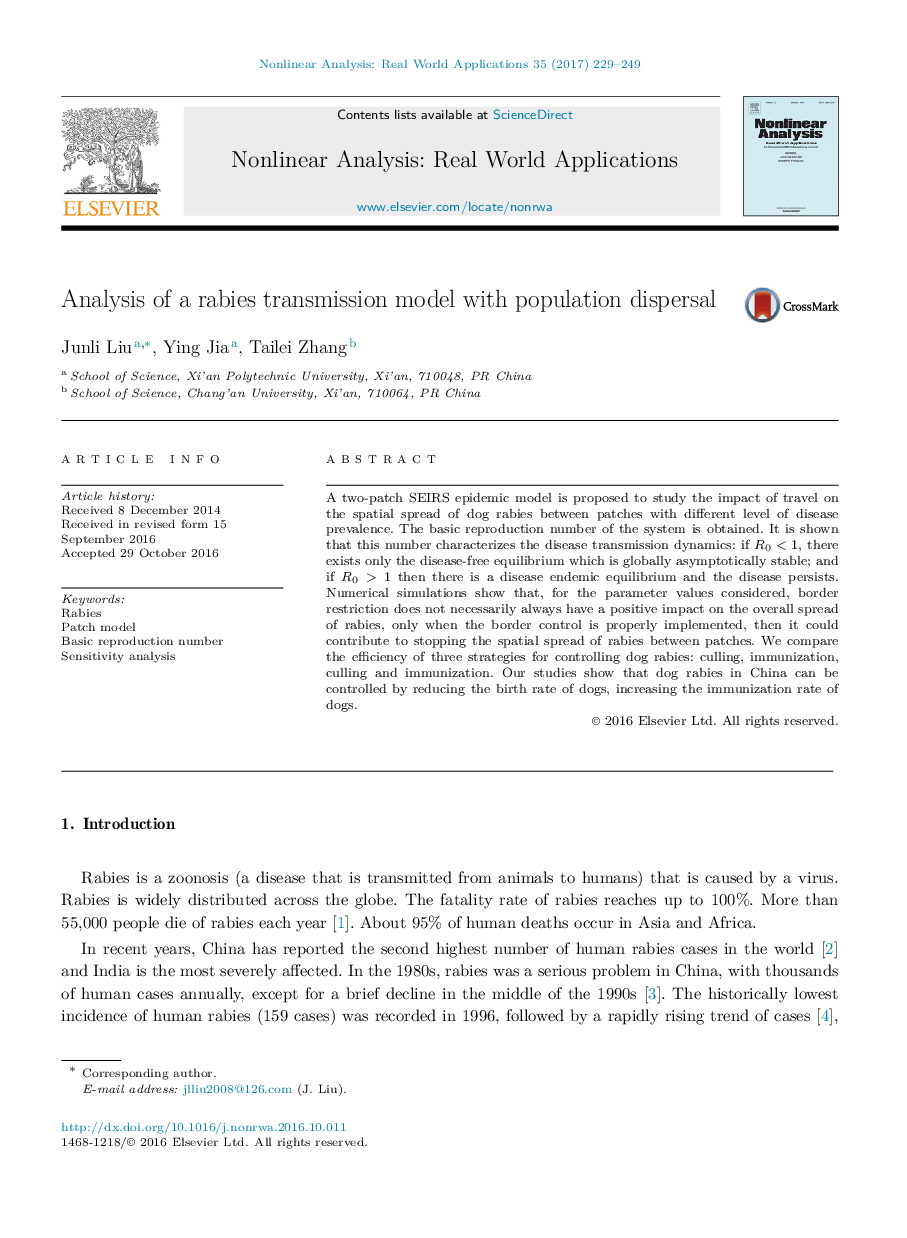| Article ID | Journal | Published Year | Pages | File Type |
|---|---|---|---|---|
| 5024491 | Nonlinear Analysis: Real World Applications | 2017 | 21 Pages |
Abstract
A two-patch SEIRS epidemic model is proposed to study the impact of travel on the spatial spread of dog rabies between patches with different level of disease prevalence. The basic reproduction number of the system is obtained. It is shown that this number characterizes the disease transmission dynamics: if R0<1, there exists only the disease-free equilibrium which is globally asymptotically stable; and if R0>1 then there is a disease endemic equilibrium and the disease persists. Numerical simulations show that, for the parameter values considered, border restriction does not necessarily always have a positive impact on the overall spread of rabies, only when the border control is properly implemented, then it could contribute to stopping the spatial spread of rabies between patches. We compare the efficiency of three strategies for controlling dog rabies: culling, immunization, culling and immunization. Our studies show that dog rabies in China can be controlled by reducing the birth rate of dogs, increasing the immunization rate of dogs.
Related Topics
Physical Sciences and Engineering
Engineering
Engineering (General)
Authors
Junli Liu, Ying Jia, Tailei Zhang,
